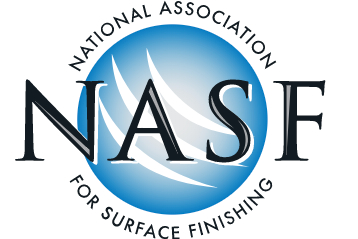EPA Releases New Guide on Imported Articles Containing Surface Coatings Subject to LCPFAC SNUR
EPA has released its final compliance guide for imported articles containing surface coatings subject to the LCPFAC chemical substances SNUR.

On January 19, 2021 the EPA released its final compliance guide for imported articles containing surface coatings subject to the long-chain perfluoroalkyl carboxylate (LCPFAC) chemical substances significant new use rule (SNUR).
In July 2020, the EPA issued a final significant new use rule (SNUR) for long-chain perfluoroalkyl carboxylate (LCPFAC) chemical substances that imposes notification and other regulatory requirements on the manufacture, import or processing of certain new uses of PFOA and its salts and a list of twenty specified LCPFAC. The LCPFAC substances subject to the SNUR do not include PFOS or 6:2 FTS, the substances used in fume suppressants in the surface finishing industry. A copy of the SNUR is available at: https://www.regulations.gov/document?D=EPA-HQ-OPPT-2013-0225-0232.
Although importers and processors of a chemical substance as part of an article are generally exempted from SNURs, this SNUR also includes imported articles that may contain surface coatings with these specified LCPFAC substances. In addition, ongoing uses of LCPFAC are not subject to the SNUR. Only those uses that arose after the January 21, 2015 publication of the proposed rule are significant new uses that require notification and review by EPA pursuant to this SNUR.
Compliance Guide for LCPFAC SNUR
The EPA’s final compliance guide that was released on January 19 provides clarification on what articles are subject to the SNUR and what constitutes a surface coating subject to the SNUR. A copy of the guidance is available at: https://www.epa.gov/sites/production/files/2021-01/documents/final_lcpfac-snur_surface-coating-compliance-guide_0.pdf.
Impact of LCPFAC SNUR and Guide on NASF Members
In summary, articles that may contain PFOS and 6:2 FTS would not be impacted by this SNUR and would still be exempt from EPA’s notification and review requirements. Accordingly, this SNUR should not substantially impact NASF and its members. If you have any questions or would like additional information on the SNUR, please contact Jeff Hannapel at jhannapel@thepolicygroup.com.
This article is courtesy of the National Association for Surface Finishing (NASF). For more information or to become a member, visit nasf.org.
Related Content
-
Advantages to Pumped Eductor Agitation
Not all agitation methods are created equally. Pumped agitation with eductor nozzles can improve process tanks and quickly show a reduction in operating costs while keeping staff safe, following environmental legislation and preventing pollution.
-
How to Choose Between Sulfate and Chloride-Based Trivalent Chromium
There are several factors to consider when choosing between sulfate and chloride-based baths for trivalent chromium plating. Mark Schario of Columbia Chemical discusses the differences and what platers should keep in mind when evaluating options.
-
Possibilities From Electroplating 3D Printed Plastic Parts
Adding layers of nickel or copper to 3D printed polymer can impart desired properties such as electrical conductivity, EMI shielding, abrasion resistance and improved strength — approaching and even exceeding 3D printed metal, according to RePliForm.















